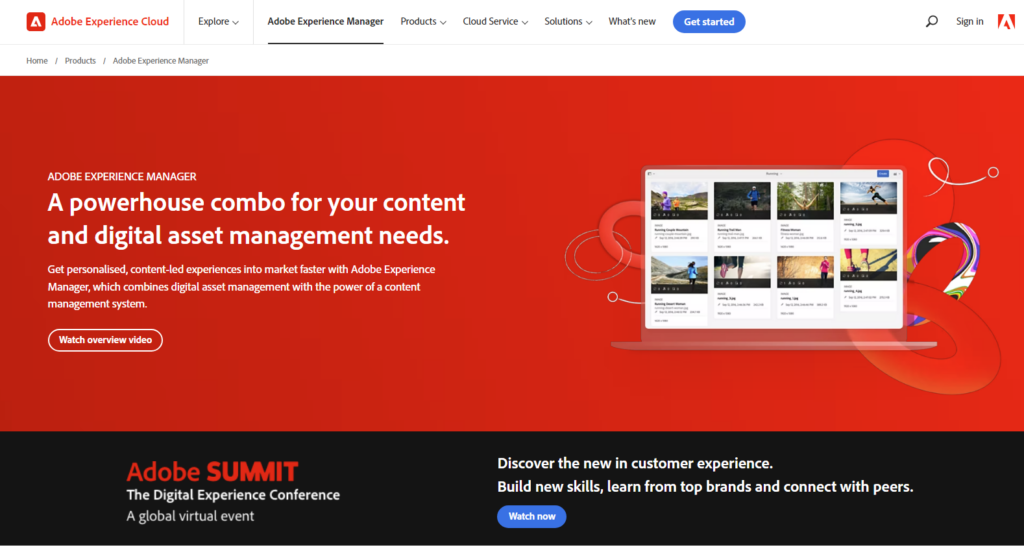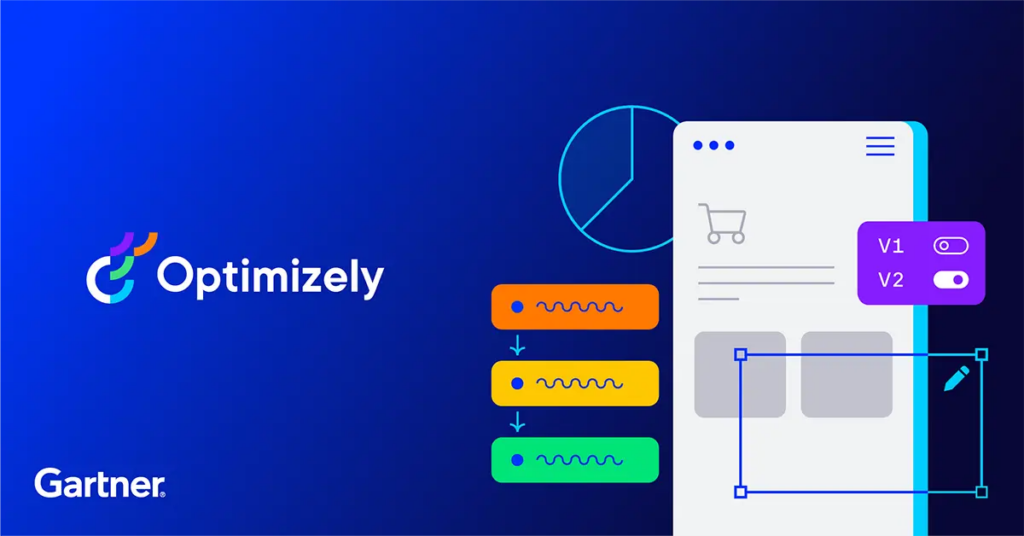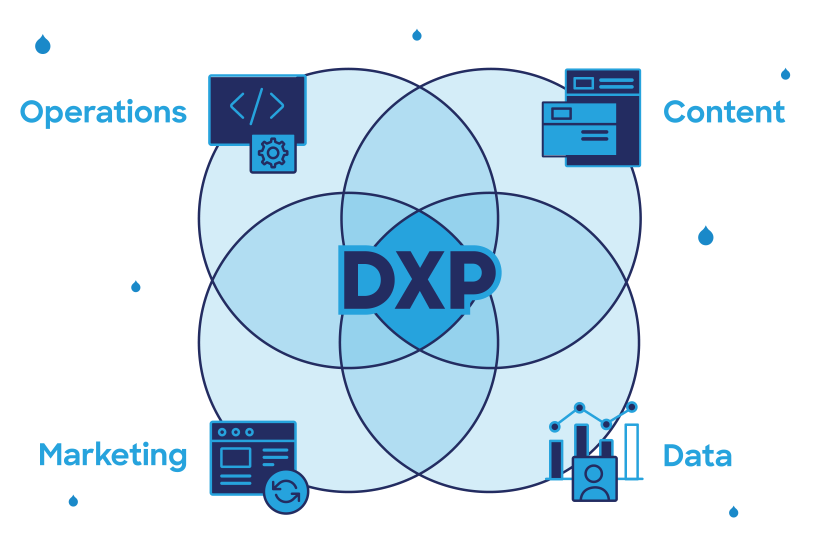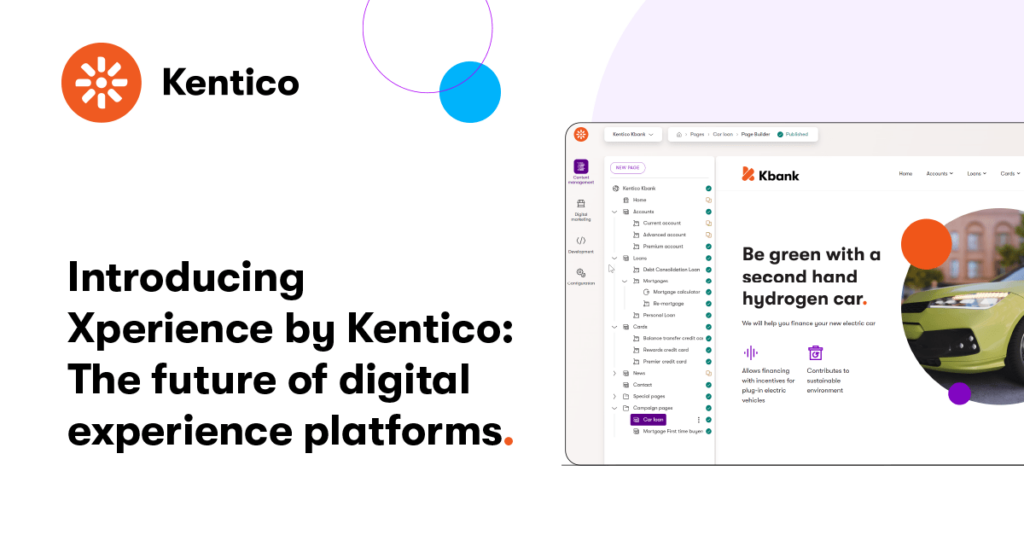Comparison: 7 Best Digital Experience Platforms for Composable Stores

Gone are the days of static, one-size-fits-all online stores. Today, customer demands personalized digital interactions and seamless experiences that cater to their unique needs and preferences.
In response, a new sun of digital commerce has arisen — one that embraces flexibility, adaptability, and innovation. Welcome to the era of composable commerce, where the digital shopping experience is not just a transaction but a journey.
Now that we’ve witnessed the power of a composable approach, it’s time to discover the Digital Experience Platforms that are leading this revolution. Each platform offers eCommerce businesses the means to create extraordinary shopping experiences.
By the end of this blog, you’ll be equipped with the knowledge to choose the ideal DXP for your composable store — a decision that will shape the future of your eCommerce success.
So, let’s begin!
Best Digital Experience Platforms for Your Business
Digital Experience Platform (DXP) would be a new term for beginners. But to understand it in a simple way, we can say “Digital Experience Platform” is a better version of Content Management Systems (CMS).
This transition took place to overcome the limitations of CMS and help brands produce digital experiences through websites, apps, customer portals, IoT devices, and more.
Get ready to explore these platforms in-depth, uncovering their unique features, capabilities, and what sets them apart in the ever-competitive world of digital commerce.
Let’s check out some Best Digital Experience Platforms in the market!
1. Adobe Experience Manager

So, you’ve heard about Adobe Experience Manager, right?
At the forefront, Adobe Experience Manager (AEM) shines as a vibrant leader within the Gartner® Magic Quadrant™ for Digital Experience Platforms (DXPs) 2023.
AEM, a key component of Adobe Experience Cloud, serves as a central hub for managing and enhancing digital experiences.
Here you can find content management, analytics, personalization, customer journey, and customer data management all under one roof. It’s available as both a managed service PaaS and SaaS, making it accessible to a global audience.
Key Features
- Content Management: Streamline content creation, management, and delivery for seamless multichannel experiences.
- Analytics: Unlock deep insights into user behavior and content performance, shaping data-driven strategies.
- Personalization: Elevate engagement with tailored, user-centric experiences.
- Customer Journey Management: Craft intricate customer journeys that drive conversions.
- Customer Data Management: Harness user data to deliver targeted and relevant experiences.
Why Adobe Experience Manager?
- Brand Authority: Adobe’s technology isn’t just known; it’s revered globally as the go-to solution for mastering the digital experience.
- Innovation: Adobe’s constant stream of cutting-edge features sets industry standards.
- Ecosystem Abundance: Adobe’s diverse ecosystem includes design and creative agencies, systems integrators, marketing mavens, and creative tools.
Limitations of Adobe Experience Manager
- Complexity: Some users believe, AEM is a complex platform, and it can take time and resources to learn how to use it effectively.
- Implementation: It can be difficult to implement, especially for large and complex businesses.
- Performance: AEM can be slow and unresponsive, especially for large and complex websites.
- Integration: You can find it difficult to integrate with other systems, such as CRM and ERP systems.
Pricing
Adobe Experience Manager comes at a premium price point compared to other DXP providers.
2. Optimizely

Now, let’s talk about Optimizely — another leader in the Magic Quadrant. Their DXP, known simply as Optimizely, packs a punch with content management, personalization, customer data management, and analytics.
You can access it through a subscription-based hybrid cloud model, combining SaaS components with a single-tenant PaaS. It’s the trusted choice for midsize to large enterprises across various industries, including retail, manufacturing, high-tech, healthcare, commercial services, and financial services, catering to both B2C and B2B use cases.
Plus, they’ve got their head in headless architecture. However, some might find the integration of their acquired technologies a little confusing.
Key Features
- Content Management: Effectively manage digital content across various digital touchpoints, ensuring consistency and relevance.
- Personalization: Craft personalized experiences for users based on their preferences and behaviors, increasing engagement and conversion rates.
- Customer Data Management: Effectively handle and leverage customer data to gain actionable insights and enhance user experiences.
- Analytics Capabilities: Utilize robust analytics tools to gather data-driven insights, helping you make informed decisions and optimize your digital strategies.
Why Optimizely?
- Modular Flexibility: Whether you prefer an all-in-one solution or a modular approach, Optimizely adapts to your evolving needs, offering a flexible and scalable platform.
- Headless Empowerment: With native support for JavaScript, Liquid templating, and hosting, Optimizely enables you to navigate the headless world with ease and provides diverse content delivery options.
Limitations of Optimizely
- The CMS in Optimizely DXP is not as customizable as some other DXP solutions.
- Lacking sufficient technical support.
- The Helpdesk of Optimizely has out-of-date articles.
Pricing: Optimizely’s pricing and packaging are simple, scalable, modular, and transparent. It has many plans from which you can select based on your requirements.
3. Acquia

Acquia, the leader in the Magic Quadrant, is making waves with its Open DXP. It’s the driving force behind the Drupal open-source web content management system – a true heavyweight.
Acquia’s DXP offers a treasure of capabilities — content management, personalization, analytics, customer journey management, and a customer data platform.
Acquia finds its home in various verticals, from communications to manufacturing, retail, and more. And it’s not just about B2C or B2B — Acquia even has something for the employee experience, targeting B2E use cases.
Key Features
- Streamlined Site Deployment: Acquia’s Site Factory simplifies website deployment and management across multiple sites.
- Templated Site Cloning: Easily clone templated sites for rapid site creation.
- Single Codebase Management: Manage multiple sites efficiently using a single codebase, reducing maintenance complexity.
- Behavior-Based Personalization: Acquia leverages machine learning for advanced behavior-based personalization.
- Next-Best Actions: Utilize machine learning models for next-best experiences, channel selection, send timing, and product recommendations.
- Low-Code Visual Designer: A user-friendly visual designer with low-code capabilities empowers teams to implement advanced features without extensive coding.
Why Acquia?
- Intranet Support: Acquia actively caters to intranet and employee portal use cases, enhancing internal communication and collaboration.
- Employee-Centric Features: Acquia’s DXP offers tools for event management, knowledge sharing, executive communications, company news, collaboration, and data insights tailored to enhance the employee experience.
- Unified Innovations: Acquia excels in integrating innovations and acquisitions across customer data management, personalization, machine learning, and low code.
- Total Experience Strategy: With support for employee experience features, Acquia is a compelling choice for organizations pursuing a holistic “total experience” strategy that encompasses both customer and employee experiences.
Limitations of Acquia
- Cost: Acquia DXP can be expensive, especially for small and medium-sized businesses.
- Complexity: Acquia DXP is a complex platform, and it can take time and resources to implement and manage effectively.
- Documentation: Documentation changes always and seems to be inconsistent. It’s difficult for users to find the information they need to learn and use the platform effectively.
Pricing: For specific pricing details, it’s advisable to directly consult Acquia, as they offer tailored solutions to meet varying business needs.
4. Sitecore Experience Manager

Sitecore offers a range of solutions tailored to your unique needs. From content management and personalization to customer data platforms and integration capabilities, it’s your digital playground.
Sitecore is all about flexibility – whether you prefer an on-premises setup or the new Experience Manager Cloud (XM Cloud), they’ve got you covered. Just be aware that while XM Cloud is the future, it’s still finding its footing in the market.
Key Features
- Content Management: Sitecore empowers you to manage your content seamlessly, ensuring that your message reaches your audience effectively.
- Personalization: Tailor the user experience with precision using Sitecore’s powerful personalization tools.
- Customer Data Platform: Harness the potential of your customer data with Sitecore’s data platform, making every interaction count.
- Integration Capabilities: Sitecore supports integrations with third-party tools, allowing you to connect and streamline your digital content strategy.
Why Sitecore Experience Manager?
- Focus on composability and cloud support, allowing you to build your digital strategy iteratively.
- Project accelerators and support for vertical markets make it a go-to choice.
- They’ve got your back with a customer success program to guide your digital transformation.
Limitations of Sitecore Experience Manager
- Challenging user interface, especially when dealing with complex features and functionalities.
- Maturing email marketing capabilities, with limitations in terms of volume capacity and advanced features.
- Difficulty finding suitable e-commerce solutions among the multiple options offered by Sitecore and its partners.
Pricing
Pricing options for Sitecore’s DXP come in different flavors, so choose wisely based on your needs and preferences.
5. OpenText Experience Cloud

Experience Cloud, powered by OpenText, stands as a notable Digital Experience Platform (DXP) in the fast-paced world of digital commerce.
This DXP platform surrounds a range of vital capabilities, including content management, analytics, personalization, optimization, and Digital Asset Management (DAM).
Businesses have the flexibility to deploy OpenText Experience Cloud either on-premises or through public cloud giants like Microsoft Azure, Amazon Web Services, or Google Cloud Platform. It also offers private cloud options via OpenText Private Cloud Services and fully managed services.
Key Features
- Content Management: Seamlessly organize and maintain digital content to ensure it remains current, pertinent, and easily accessible to engage your audience effectively.
- Analytics: Gain valuable insights into customer behavior, preferences, and emerging trends, facilitating data-driven decision-making.
- Personalization: Craft highly tailored customer experiences through advanced personalization tools that enable the delivery of content and offers tailored to individual users.
- Optimization: Continuously enhance digital experiences by refining content, layout, and user journeys based on real-time data and user interactions.
- Digital Asset Management (DAM): Manage digital assets efficiently, ensuring they are well-organized, readily available, and aligned with your brand’s consistency and integrity across various channels.
Why OpenText Experience Cloud?
- Expertise in Regulated Industries: OpenText’s extensive experience in serving highly regulated sectors positions it as an ideal choice for organizations that require robust governance, security, account management, and audit capabilities in their authenticated experiences.
- Customizability and Extensibility: The platform’s exceptional customizability and extensibility, coupled with comprehensive APIs for seamless integration, extensive documentation, and an active developer community, provide the agility needed to tailor the DXP to meet unique business requirements.
- Comprehensive Information Management: Beyond DXP, OpenText offers a broader spectrum of information management capabilities, encompassing customer communications management, document management, content services, and content collaboration.
Limitations of OpenText Experience Cloud
- Expensive: OpenText Experience Cloud is a relatively expensive platform, especially for large enterprises.
- Complexity: It can be complex to upgrade, and it can take some time for users to get up to speed.
Pricing
The pricing of OpenText Experience Platform is not publicly available. OpenText uses a quote-based pricing model, so you will need to contact OpenText directly to get a quote for your specific needs.
6. Kentico’s Xperience

Kentico, an award-winning digital experience platform provider, offers Xperience by Kentico, a dynamic DXP solution designed to streamline resource utilization and enhance multichannel digital experiences through a hybrid headless approach.
With its diverse capabilities, Xperience empowers teams to efficiently create personalized customer journeys across multiple channels, fostering customer advocacy. Marketers benefit from built-in low-code, no-code tools, enabling experimentation with new marketing channels and elevating marketing ecosystem maturity.
Kentico ensures exceptional Time-to-Market and Total Cost of Ownership (TCO) advantages, supported by world-class assistance, flexible deployment options (SaaS or on-premises), and a global network of implementation partners.
Key Features
- Content Management: Xperience offers intuitive tools for creating, managing, and publishing content across websites and digital channels.
- Digital Marketing: It includes comprehensive digital marketing tools for automating campaigns, personalizing content, and optimizing customer engagement.
- E-commerce: Xperience offers eCommerce capabilities for building and managing online stores, including product catalogs, shopping carts, and secure payment options.
- Personalization: The platform enables advanced personalization, allowing businesses to tailor content and experiences to individual user preferences.
- Marketing Automation: It offers marketing automation features for creating targeted campaigns, lead nurturing, and tracking customer interactions.
- Multi-Channel Delivery: Xperience supports content delivery across multiple channels, including websites, mobile apps, email, and social media.
- Analytics and Insights: It provides robust analytics tools for tracking user behavior, analyzing performance, and gaining insights to optimize digital strategies.
- Integration Capabilities: Xperience offers seamless integration with other systems, allowing businesses to connect with CRM, ERP, and other third-party applications.
Why Xperience?
- Xperience is scalable to accommodate the growing needs of businesses, whether they are startups or large enterprises.
- The platform prioritizes security with features like user authentication, data encryption, and compliance with industry standards.
- Excellent TCO and ROI, very fast time-to-market
- Kentico provides market-leading support and has a vibrant community of users and developers for sharing knowledge and resources.
Limitations of Xperience
- Complex: Some users have noted that Kentico’s Xperience DXP has a steep learning curve, even for experienced users.
- Limited E-commerce Capabilities: Kentico’s e-commerce support is considered immature compared to open-source e-commerce engines, according to customer experience.
- Scalability: It’s difficult to scale the platform to meet the needs of growing businesses.
Pricing

Kentico’s Xperience DXP platform is priced on a subscription basis. There are three different pricing tiers: Business, Enterprise, and Corporate. The pricing for each tier depends on the features and functionality that you need.
7. Core dna
Core dna is a unified digital experience platform that provides composable CMS, e-commerce, and analytics solutions. It utilizes a powerful hooks engine and APIs to facilitate flexible integrations.
As a headless platform, Core dna allows the decoupling of the front end and the backend to offer complete design control. Content is managed centrally via its multi-tenant SaaS model and distributed across channels. Regular updates keep the platform modern.
Core dna offers an enterprise-grade infrastructure with high performance, security, and scalability. Its composable architecture and built-in applications make it a flexible digital experience solution.
Key Features
- Website Management
- SEO Management
- Mobile Access
- Cataloging/Categorization & Inventory Management
- Customer Relationship Management (CRM)
- Data Security
- Multi-Channel Marketing
- Multi-Currency
- Multi-store and omnichannel capabilities
- Order Management
- Promotions Management
- Reporting & Statistics
- Shipping & Returns Management
- Reviews Management
- Content Creation & Preview
Why Core dna?
- Composable and flexible content structure that is customizable for any business needs
- Headless and decoupled architecture providing front-end flexibility and control
- Wide range of built-in applications and solutions reducing the need for separate tools
- Enterprise-grade performance, security, scalability, and infrastructure
- Regular product updates and modern features are delivered via bi-weekly releases
- Centralized multi-tenant SaaS model for simplified content management
- Powerful hooks engine facilitating seamless third-party integrations.
- APIs and webhooks enabling omnichannel experiences and custom integrations
- Developer-friendly with tools and environments for customizations when needed
- Proven to handle complex e-commerce sites, products, and multi-brand setups
Limitations of Core dna
- Core dna is a cloud-based DXP, so you will need to have a reliable internet connection in order to use it.
- The implementation process of Core dna can be complex and time-consuming.
Pricing

Core dna’s pricing structure is based on a number of factors, including the number of server requests your business uses, the number of users, and the level of support you need. Core dna offers a variety of pricing plans to accommodate businesses of all sizes and budgets.
Here we come to the end of our list of best digital experience platforms! Our list has ended but not our journey. After studying all the DXPs, now we will compare them to find out the most suitable one for your business growth.
Let’s move to the next section!
Comparison: Best Digital Experience Platforms
Still confused between the digital experience platforms which one to choose?? Don’t worry. The detailed comparison table (given below) will help you determine the right DXP for your digital presence.
| Factors | Adobe | Optimizely | Acquia | Sitecore | OpenText | Xperience | Core dna |
| User-Friendly Interface | limited | √ | √ | limited | limited | limited | √ |
| Content management | √ | limited | √ | √ | √ | √ | √ |
| Account services | √ | √ | √ | √ | √ | √ | √ |
| Personalization and context awareness | √ | √ | limited | √ | limited | √ | √ |
| Analytics and optimization | √ | √ | limited | √ | √ | √ | √ |
| Customer journey mapping | √ | limited | limited | √ | √ | √ | √ |
| Customer data management | √ | limited | limited | √ | limited | limited | √ |
| Presentation, delivery and orchestration | √ | √ | √ | √ | √ | √ | √ |
| Search, navigation and insight | √ | √ | √ | √ | √ | √ | √ |
| Collaboration and knowledge sharing | √ | √ | √ | √ | √ | √ | √ |
| Security and access control | √ | √ | √ | √ | √ | √ | √ |
| Artificial intelligence (AI) | limited | √ | limited | limited | limited | limited | ✗ |
| Cloud capabilities | √ | √ | √ | √ | √ | √ | √ |
| Architecture and platform design | √ | √ | √ | √ | √ | √ | √ |
| Integration, interoperability and extensibility | √ | √ | √ | √ | √ | √ | √ |
| Multiexperience support | √ | √ | √ | √ | limited | √ | √ |
| Content services platforms | √ | √ | √ | √ | √ | √ | √ |
| Low-code application development (LCAP) | √ | √ | √ | √ | √ | √ | √ |
| Multiexperience development (MXDP) | √ | √ | √ | √ | limited | √ | √ |
| Digital commerce | √ | √ | √ | limited | limited | limited | √ |
| Digital asset management (DAM) | √ | √ | √ | limited | limited | limited | √ |
| Marketing automation platforms | √ | √ | √ | √ | √ | √ | √ |
| Content marketing platforms (CMP) | √ | √ | √ | √ | √ | √ | √ |
| Product information management (PIM) | √ | √ | √ | limited | limited | limited | √ |
| Customer service and sales | √ | √ | √ | limited | limited | limited | √ |
| Customer relationship management (CRM) | √ | √ | √ | limited | limited | limited | ✗ |
| Customer communications management (CCM) | √ | √ | √ | limited | limited | limited | √ |
| Third-party Integrations | √ | √ | √ | √ | √ | √ | √ |
| Ease of use | limited | √ | √ | limited | limited | √ | √ |
| Quick Time to market | limited | √ | √ | limited | limited | √ | √ |
| Excellent Customer support | limited | √ | √ | √ | limited | √ | √ |
Please note that this is just a general evaluation, and your specific needs may vary. It is always best to consult with Digital Commerce Experts to ensure that the platform is the right fit for your business.
So, have you decided which digital experience platform suits your business operations? Not yet? Then, a few tips are waiting for you in the next section.
Which Digital Experience Platform is right for you?
The best digital experience platform (DXP) for you will depend on your specific needs and requirements. You need to evaluate your specific needs and requirements and compare different solutions. You should also get demos of the DXP solutions that you are interested in so that you can see how they work in practice.
However, there are a few factors that you should consider when making your decision:
- Features: What features are most important to you? Do you need a DXP with personalization capabilities? Make a list of the features that you must have and those that would be nice to have.
- Ease of use: How easy is the DXP to learn and use? If you have limited technical expertise, you may want to choose a DXP that is more user-friendly.
- Cost: DXP solutions can vary in price, so it is important to factor cost into your decision.
- Scalability: Will the DXP be able to scale with your business? If you expect to experience rapid growth in the future, you will need to choose a DXP that can scale to meet your needs.
- Support: Does the DXP vendor offer good customer support? If you need help with the DXP, you want to make sure that you can get it quickly and easily.
Get feedback from other businesses that are using DXP solutions. What do they like and dislike about their DXP? What advice would they give you? There are a number of online and print resources that review DXP solutions. Read these reviews to get an unbiased perspective on different solutions.
Once you have chosen a DXP, it is important to implement it correctly. Be sure to work with a qualified DXP partner to ensure that the platform is implemented to meet your specific needs.
Wrapping Up!
“Digital experience” — nowadays the most crucial element for all digital commerce platforms.
For that, we faced the need for Digital experience platforms that are an integrated set of core technologies responsible for handling all the major components of creating, managing, delivering, and optimizing contextualized digital experiences.
They offer a lot of features that take care of digital experience management and fulfill customer expectations on various digital platforms. There are a lot of different DXP solutions out there, each with its own strengths and weaknesses.
When choosing a DXP, it’s important to think about what you need to optimize digital journeys for your customers. Hope this blog helped you in finding the most suitable DXP solution to support your growing business and customer loyalty.
What to read next? Your next read is ready – Comparison: 7 Best Enterprise Ecommerce Platforms!






Post a Comment
Got a question? Have a feedback? Please feel free to leave your ideas, opinions, and questions in the comments section of our post! ❤️